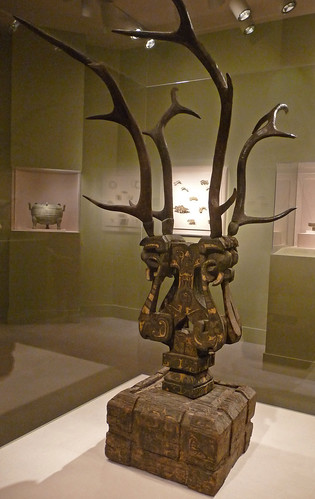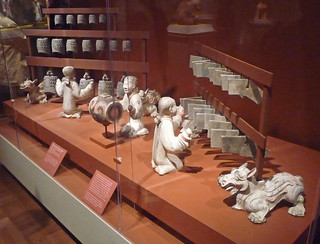Jeremiah Jenne pointed me to this most wonderful bit of French nonsense: Jean Levi’s claim that the terracotta army is a modern forgery.
These famous clay sentinels, which protect the sleep of the despot eternally as is insistently and pompously proclaimed by journalists, do not date back from the 3rd century B.C., the time when the Great Emperor was buried, but from the 20th century, at the end of the Cultural Revolution when the struggle between factions was raging with the “Gang of Four”. As you’ve pointed out, it is nonetheless surprising that this “new wonder of the world”, which has crowds from the four corners of the planet gape with admiration, was inscribed on the World Heritage List without being assessed by international experts as is usually the case when a country officially asks for an artistic or architectural place or property to be listed. The Chinese authorities purely and simply refused the UNESCO experts access to the archeological site, although those same experts apparently did not take much offence as Lingtong’s buried army was added to the list anyway.
He argues that the statues are too big – inconsistent with Warring States styles – and were put together too quickly given their scale and complexity. As for how such a cover-up could happen, he suggests, inverting the chronology in a somewhat circular fashion, that their manufacture was covered up by saying that they were making copies, when what was really going on was the initial planting of the fakes. He goes on to cite Guy Debord (also Agamben and Baidou) and Sunzi, and other famous modern fakes like The Protocols of the Elders of Zion and an incident of a German museum being duped into displaying fake Terracotta Warriors.
 Having read John Man’s book on the Terracotta Warriors, the argument against the plausibility of construction seems quite hollow: the more Man learns about how the construction is done, the lower his estimates of necessary labor become. The stylistic argument seems oddly deterministic: because the regime was artistically conservative elsewhere (he claims) doesn’t mean that there couldn’t be some innovation. The literalism of the life-sized warriors seems consistent, to me, with the ideology of regulation and anti-abstractionism of the Qin regime. Why didn’t it create a pattern, imitators? Which is more plausible: a Maoist conspiracy or that nobody who had the necessary resources wanted to be caught imitating the Qin state?
Having read John Man’s book on the Terracotta Warriors, the argument against the plausibility of construction seems quite hollow: the more Man learns about how the construction is done, the lower his estimates of necessary labor become. The stylistic argument seems oddly deterministic: because the regime was artistically conservative elsewhere (he claims) doesn’t mean that there couldn’t be some innovation. The literalism of the life-sized warriors seems consistent, to me, with the ideology of regulation and anti-abstractionism of the Qin regime. Why didn’t it create a pattern, imitators? Which is more plausible: a Maoist conspiracy or that nobody who had the necessary resources wanted to be caught imitating the Qin state?
I may not have pictures of the warriors in my collection to share, but at least I’m not using images from “The Mummy” or obviously photoshopped Wheel of Fortune pictures…. if Levi wants his ideas taken seriously, he really should find more friendly magazines. Until I see some actual evidence to the contrary, rather than fanciful theories, I will continue to present the terracotta warriors as an actual component of China’s early history.

I love “French nonsense”
Far worse is what comes after
“The Great Wall as it is today, and whose layout is situated more to the south than the one of the First Emperor, dates back from the Ming Dynasty. It was raised, crowned with watchtowers, crenellation and small pagodas, covered with a facing of freestones so as to obey the aesthetic canons of the Walt Disney studios: it has nothing to do anymore with the long snaky ochre wall which wound through the steppes in ancient times.”
That the current wall is the Ming one is pretty well known, but that it was built to obey the aesthetic canons of the Walt Disney studios? I suppose given what I know about Uncle Walt and how he treated his employees I suppose you could compare him to Ming Taizu… Have some more snail juice Jean.
I think he’s making a statement about the Mao-era reconstruction of the Ming wall as a tourist attraction, but ignoring the fact that the Ming wall was stone-faced with watchtowers originally. He might even be making an argument about the Ming wall being more theatrical than functional, but I think I may be reading too much meaning into it.